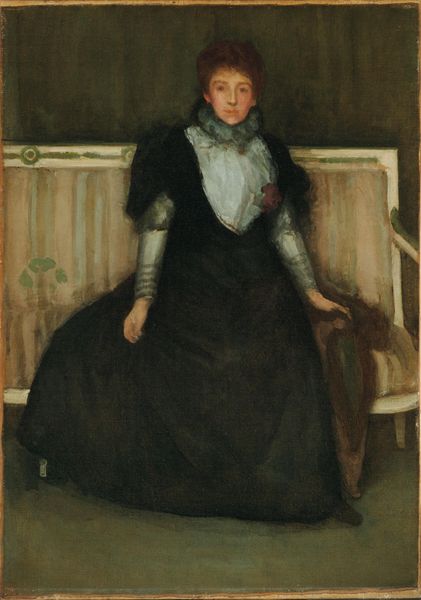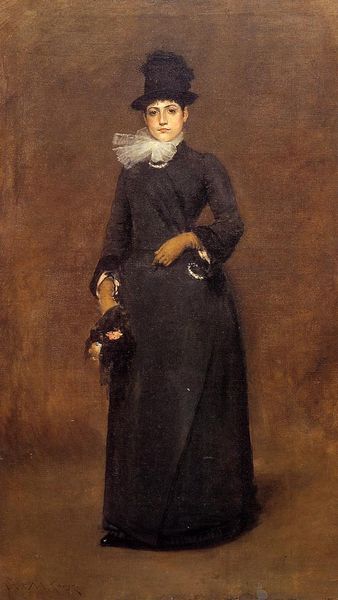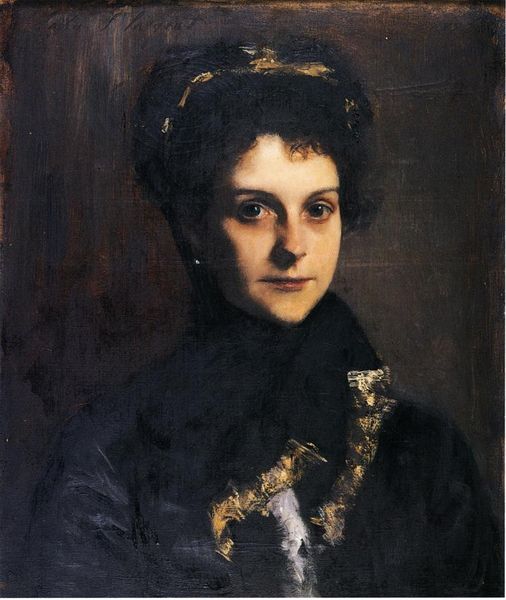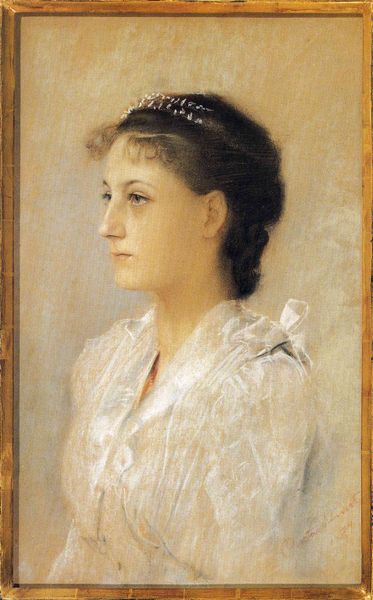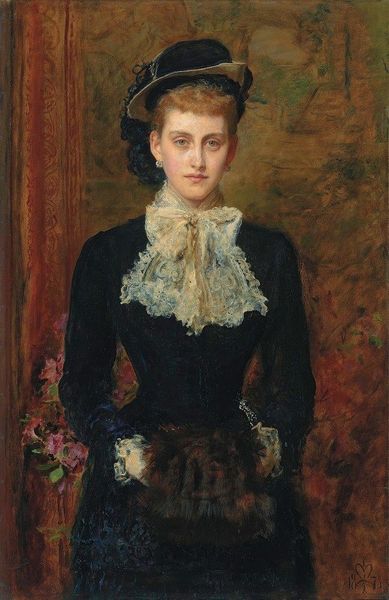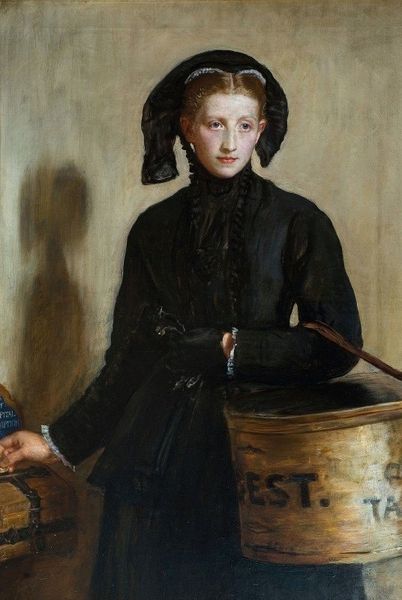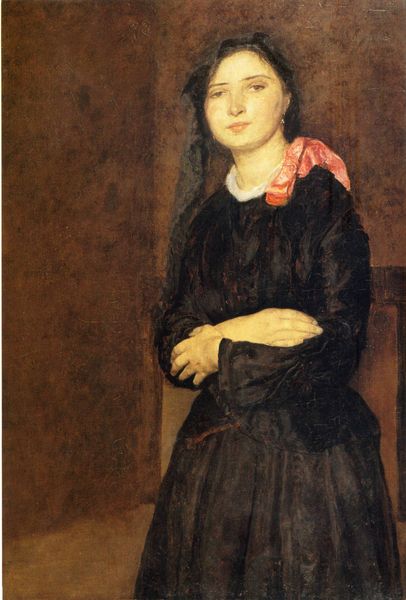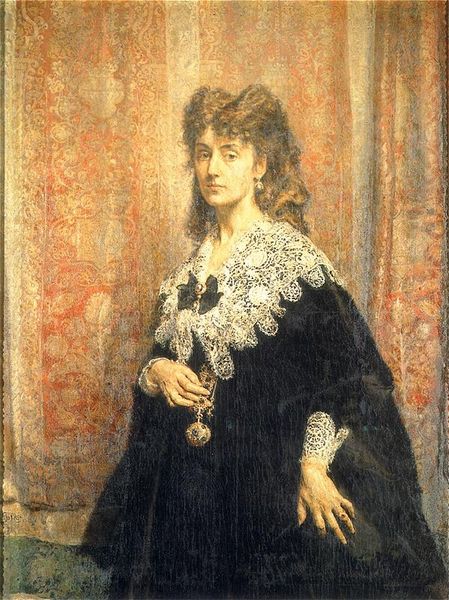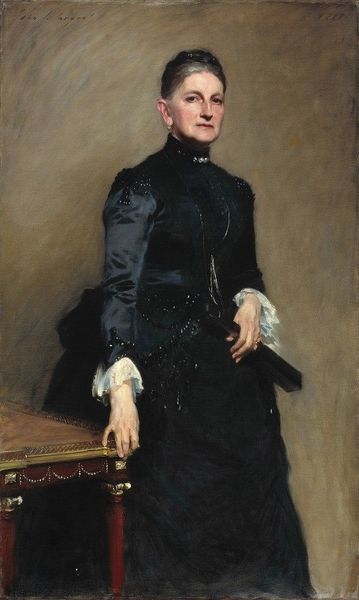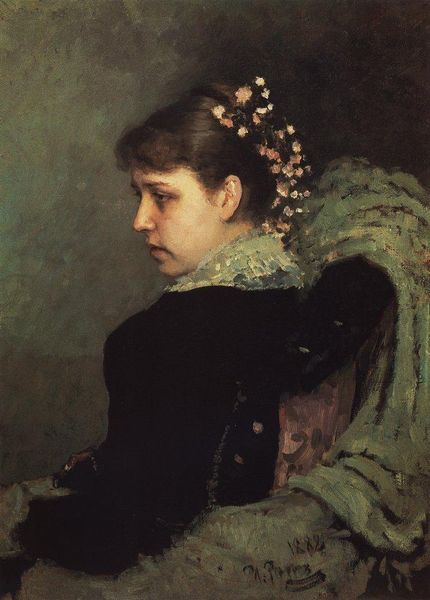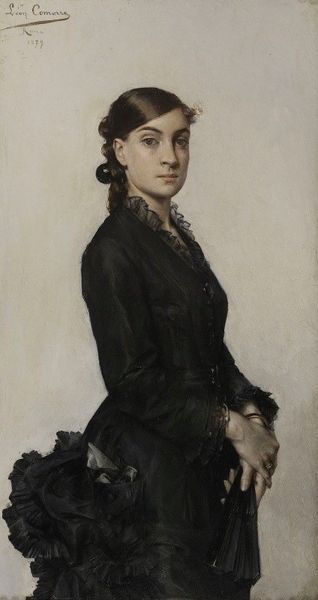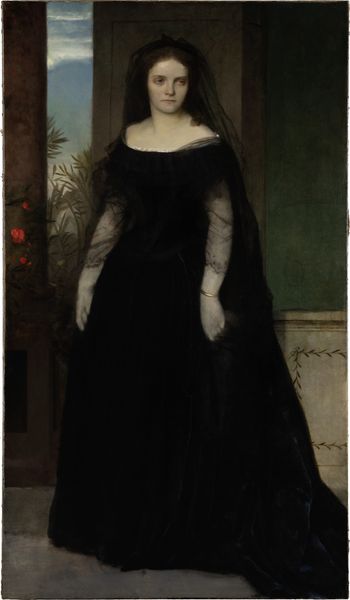
Copyright: Public domain
Curator: Painted in 1879, this is William Merritt Chase's portrait of Harriet Hubbard Ayer. Immediately, one notices the subject's demure pose, hands clasped in front of her, and her somber black attire. What's your first impression? Editor: Austerity. Her dark clothing set against the pink background creates an atmosphere that's both elegant and melancholic. I find myself wondering about the social constraints she may have been experiencing. Curator: That’s interesting. Considering Chase's connection to the New York art scene, it’s helpful to contextualize Harriet's attire. Her dark lace dress might be making a specific kind of fashion statement – perhaps one that speaks to her social standing within a specific societal framework. Editor: Definitely. This image really makes me question societal expectations of women in the late 19th century, from dress codes to behavior. The subtle way Chase renders her expression also suggests inner strength, or perhaps even resilience, against those expectations. Was it also common at this time for artists to create a "dark lady" figure in portraits, or at least this is what I call her due to her color scheme and attitude, in the image of powerful bourgeois? Curator: Precisely! Academic art in general served to reinforce social structures. And yes, depictions of bourgeois figures such as Harriet was to make some kind of statement on what society was supposed to look like. Let's delve a little deeper: note the artist's use of impasto technique, visible especially on the dress and in the rendering of her skin, adding depth to her character. This method of expression can reflect upon what Chase has observed. Editor: Absolutely, technique isn’t ever really divorced from intent, especially when dealing with portraits like these. To think about the labor required to make those gestures appear on canvas tells us just how significant an expression, costume and colors can become for both the artist, model, and potential buyer. It makes me feel almost voyeuristic as a viewer— as though I'm peering into a secret, guarded life. Curator: I agree entirely. When one examines paintings such as this closely, the power dynamics at play become much clearer. Ultimately it reflects our contemporary perspective, inviting discussions on women's representation within artistic contexts. Editor: Right. It pushes us to reflect on how far, or how little, representational progress we've made today when it comes to race, class, and gender in art.
Comments
No comments
Be the first to comment and join the conversation on the ultimate creative platform.

